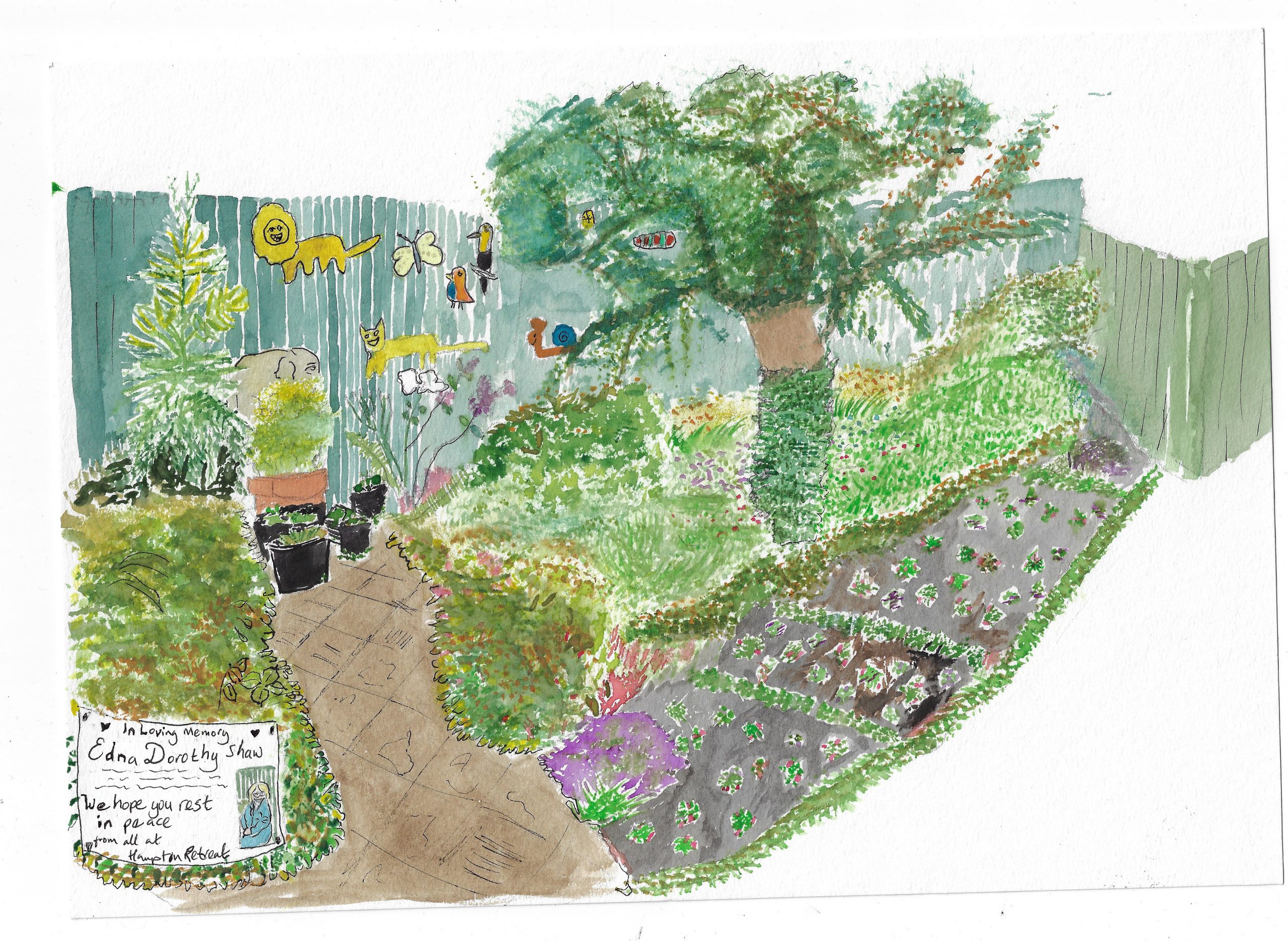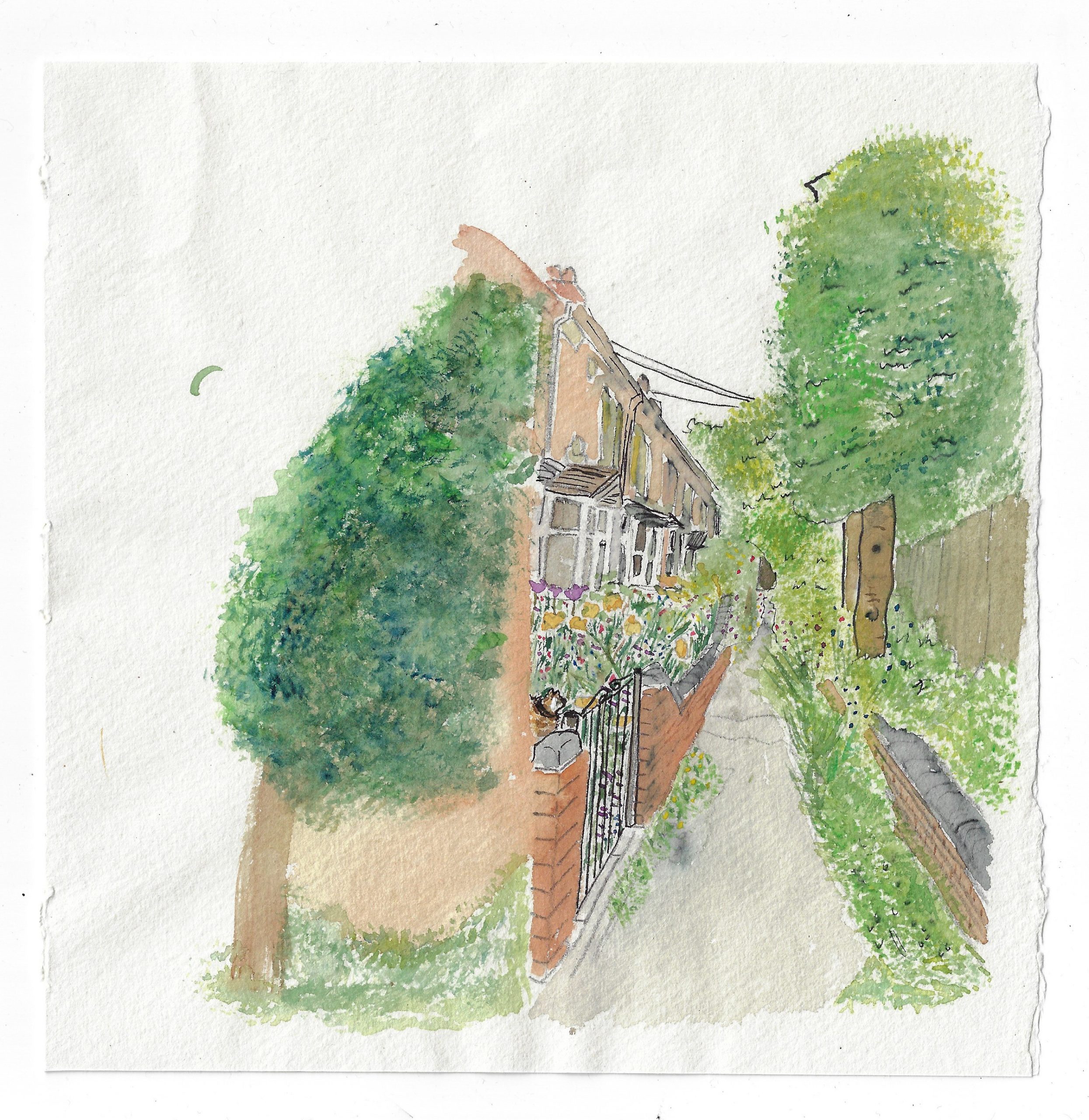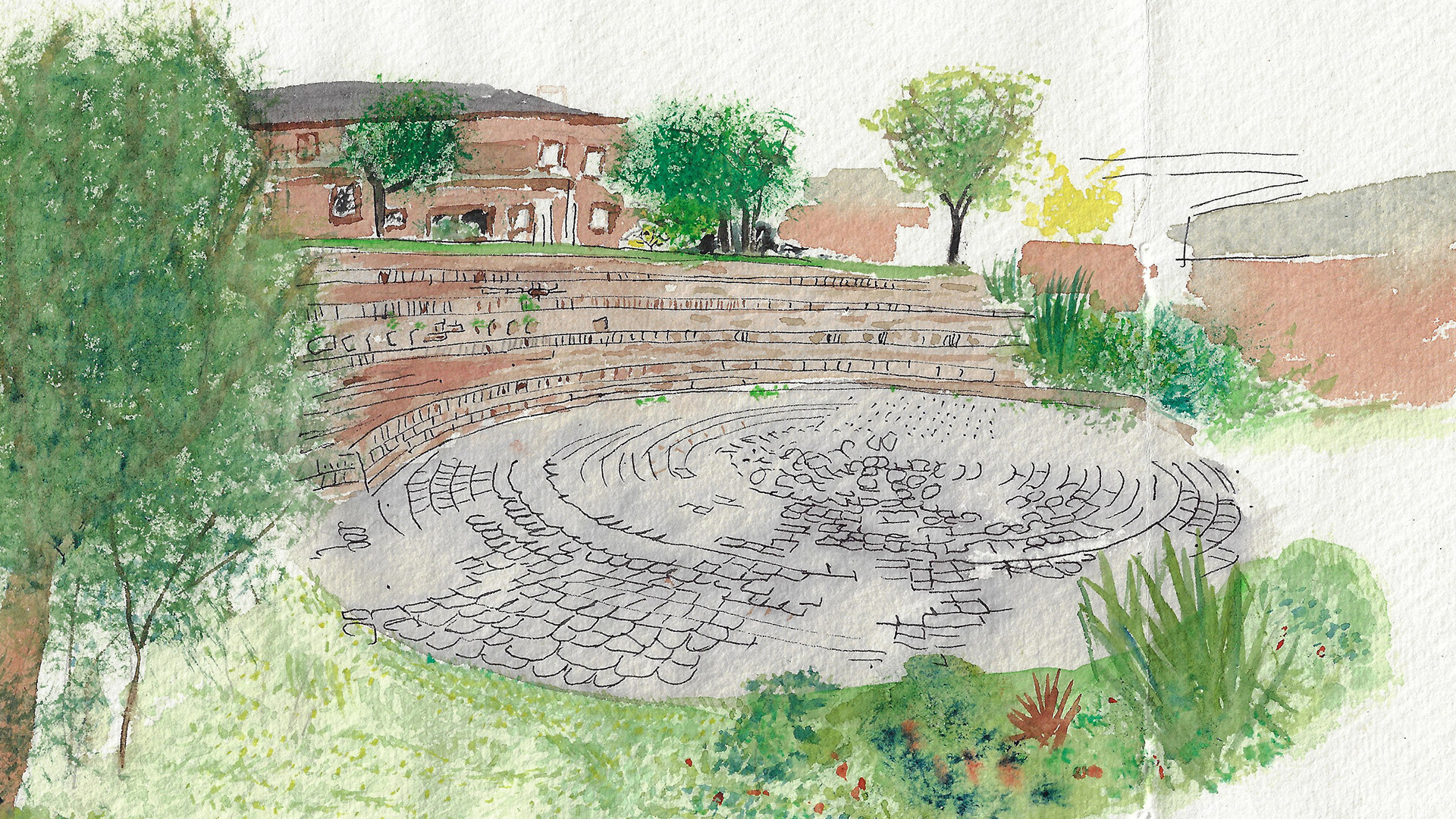By Jonathan Gurling
If we were to go round this congregation I’m sure we would find most people could give the name of a place – or perhaps a few places – that each of you regards as your favourite place (or places) in the world. The places you most value and you are happiest and most fulfilled being in. Your choice wouldn’t necessarily be some exotic place far away. It might be a corner of your garden at home, or a particular café you enjoy going into, or perhaps the place of worship which you may have attended for many years, and where you gain your inspiration and your spiritual enlightenment. Special places, for many of us will be where we have encountered God – especially, perhaps, through the natural world; or through the love of those who are special to us.
Now, I don’t have time to go round asking people to say where one of their places might be, but if we were to do that, I imagine some of you at least would suggest a garden or a place of natural beauty. Such places give many of us solace. They uplift us. Perhaps they inspire us. For some of us, they tell us something special about the Creator.
I would certainly nominate gardens. Many years ago, as a student new to this city, I visited the garden at Winterbourne, right beside Birmingham University. About a year ago I became a member of Winterbourne and across the months I’ve visited every week or two. It is 7 acres of beautifully maintained and enormously diverse gardens of all sorts.
When I regularly say to my wife ‘I went over to Winterbourne again today’, she will sometimes ask me ‘Don’t you get bored going to the same place, week after week?’ Well, no I don’t because it’s never the same place from one visit to the next. It is in the nature of gardens that they constantly change; they delight us; they surprise us; and, for me, they fulfil us.
So, my favourite place is a garden; actually a number of gardens – places of rest and colour, of renewal, contemplation and joy. They are places where God’s creation abounds.
Now, I think one of the things we share as Christians and Muslims, and indeed as other people of faith, is that we are called to love the world.
I’m not going to let those words just drift off as a fine-sounding statement. Let’s just think for a moment about loving the world. What does it actually mean to ‘love the world’? How do we show that love? How should we feel when we love the world? How does the act of loving the world change us and bring meaning to our lives?
Perhaps a way to approach this is to think about what and who we love in other parts of our lives. I hope we can all say that in some way there is someone or some thing that we love – in a deep and life-enriching way. I’m not talking superficially here…..you know, some of you might say that you love chocolate. Don’t get me wrong, chocolate can be pretty important and life-enriching in its way, but I think we all know the difference between that and, say, the love we feel for our lifelong partner, the love we feel, even beyond life, for our mother or father, or the unending love a parent feels for their children. That sort of love gets into our soul. It is deep and once we have been blessed with such love, we really can’t imagine our life without it. The loss of such love can be almost unendurable. That, I believe, helps us to think about how we are called to love the world. This kind of love we are talking about is pure gift……what in Christian terms we speak of as Grace……. A gift we haven’t earned; we don’t have some sort of automatic right to it; it is unconditional; love freely given, does not expect something in return. Yet, in some mysterious way, it is two-way. Such love as this flows back and forth, like the ebb and flow of the sea lapping on the shoreline, constantly kissing the sand and retreating to be filled again with energy to kiss the sand once more, and on into eternity.
We love the world because God created it…….created it to give us life; created it to give us joy. I believe passionately in a God who gives joy. Sadly, followers of most faiths have at some point turned from seeing God as a God of delight and joy, and started seeing the Holy One as judge and executioner. Christianity has certainly had many parts of its history where the joy and freedom of the Gospel has been turned into a set of rules to be enforced, with penalties for those who fall short. That, I believe, is not God’s way.
God invites us in……..to enjoy the world He has created. If, as a pure act of love, we are given something of infinite beauty, then it is precious to us. The last thing we want to do is to destroy it. Yet, we know, don’t we, (if only because people like David Attenborough and Greta Thunberg, the United Nations, and the climate scientists keep telling us with the ever-increasing force and urgency of truth) that this greatest gift of all – the world we inhabit, the world upon which we depend for life, we almost systematically seem to treat with contempt and arrogant carelessness.
There is something really basic and fundamental about this. We are conditioned it seems to see the garden as a sort of ideal place from which to gain meaning and inspiration.

Funda mental to spirituality in most faith traditions is the natural world as epitomised in the garden. The garden is, at one and the same time, a place of peace, tranquility and joy, and also a place of work, effort and planning. Gardens are constantly changing, because they are full of life, and life, as with my reflection on the garden at Winterbourne, is ever-changing.
It’s no coincidence or accident that pretty much all the major faiths have some sort of creation narrative and something of their origins lie in a garden. The garden is a powerful symbol and expression of the spirituality of almost all of us. It is something so precious that we all share.
In the Christian – and Jewish and Islamic – traditions it is Eden – the sacred place where it all began, wherein humanity and nature and God co-existed in harmony.
The word ‘paradise’ is sometimes used in relation to the Garden of Eden. The original Jewish Torah – the Holy Scriptures – didn’t speak of Paradise. That is a reworking of Christianity. Greek – the language of the New Testament – borrowed an ancient Persian word (pairidaeza) which, I understand, means a walled pleasure garden, designed for shade, beauty and contemplation.
Islam, I understand, also embodies the idea of Paradise, as the place where we all dwelt before the Fall and to which we will return if we die as believers. This is a perfect world, not requiring our labour to maintain it. So, Paradise doesn’t exist in our physical world. The Fall, in which mankind first rebelled against God, removed that state of perfection from us, only to be regained in the life beyond death, if we die as believers.
The nearest we get to that state of perfection is, through our own labour, in the creation of gardens – created out of wilderness and desert. In the variety of religious and cultural settings, these gardens which seek closeness to Paradise are formal. They tend to embody clear and recognisable designs.
In Christianity, the monastic garden was enclosed. It was a place for prayer and contemplation, so central to the enclosed monastic life, but it was also a place for work and productivity. The garden had to sustain the monastic community, growing the fruit and the vegetables needed. It would also usually contain a herb garden for cooking and for medicinal and healing purposes.
The garden in Islam is just as important as it is in Christianity. The form and layout of gardens is essential in both traditions. The garden in both faiths is full of religious symbolism in the ground plan that is followed, the plants which are grown, the presence and use of water, the inclusion of trees for shade.
We also find gardens as central to life and practice in Eastern religions, such as Taoism in China and Buddhism and Shinto in Japan. These faiths are not so much concerned with an original state of perfection from which mankind has fallen. Taoist and Buddhist gardens are more about living with the flow of nature. They tend to be less formal, less dependent on human effort to design and maintain the garden. Human labour still very much has a role and purpose, but it is about working with nature rather than trying to control it.
There are very different beliefs across the major faiths but the importance of the garden as a means of understanding creation and as an environment in which we can thrive and find meaning and purpose, are all remarkably common across faiths.
So, this Sacred Spaces Project will strike a chord in most religious and cultural settings. It is about creation and our responsibility, not as creators, but as respecters and lovers of creation. I suggest that is why protection of the planet, of all its green spaces, great and small, and of the many different delicate habitats which it is much easier to destroy than to help to flourish, is one of the most sacred responsibilities for people of faith, whatever our specific faith may be.

The final thing I want to reflect upon here – and to try to do so very quickly – is the two scripture readings we’ve heard. It will not have escaped your attention that both readings are set in a garden, but they are very different types of reading and different gardens. At least, they are gardens which reveal very different aspects of our experience of God.
The first, from Genesis, is the familiar Garden of Eden story. The original story of a time before temptation; before mankind, in the persons of Adam and Eve had ‘fallen from a state of Grace’ (as we might put it)
The second reading is set in the Garden of Gethsemane. A place of sorrow and anguish. A place of loneliness and solitude. No one amongst the Disciples could stay awake with Jesus. He was alone and his destiny would be to face his suffering on the cross alone.
Two gardens, probably both beautiful in their own ways. Both would have revealed aspects of God’s creation, but they couldn’t have been more different in terms of our response to them. Eden is a sort of vision of paradise – a place where everything makes perfect sense; God’s creation as it was intended to be. Although we know that if we had read on to subsequent verses that perfect vision rather dramatically started to come apart.
But then we have Gethsemane which somehow is depicted as a dark place. The sin which began in the human disobedience and defiance in Eden, culminates in the calamitous abandonment of Gethsemane, which ultimately then led to the Cross.
Two gardens as symbols of the extremes of good and evil.
We are right, in this Sacred Spaces Project in Balsall Heath, to rejoice in the God-given beauty of gardens – of the natural world. But, we all know that the garden sometimes also stands as a symbol of the risk that humanity’s greed and arrogance can destroy goodness.
And, this wonderful Project has to be set alongside all the threats which our lifestyles, especially here in the affluent world, are posing for the integrity and the health of the creation upon which we depend for our continued existence. This is why the sustaining of the natural world and concern for the health and future of the planet is a central concern of all those of us who regard ourselves as being, in whatever way, people of faith. God’s creation is precious – in all its beauty; both its simplicity and its complexity.
This reflection was given by Jonathan Gurling at a special service in Balsall Heath Church Centre on Sunday 29 May. It was a church service to which Muslims and people of other faiths were specifically invited as part of the Our Garden – Sacred Spaces of Balsall Heath project. The art is by Shaheen Ahmed.

